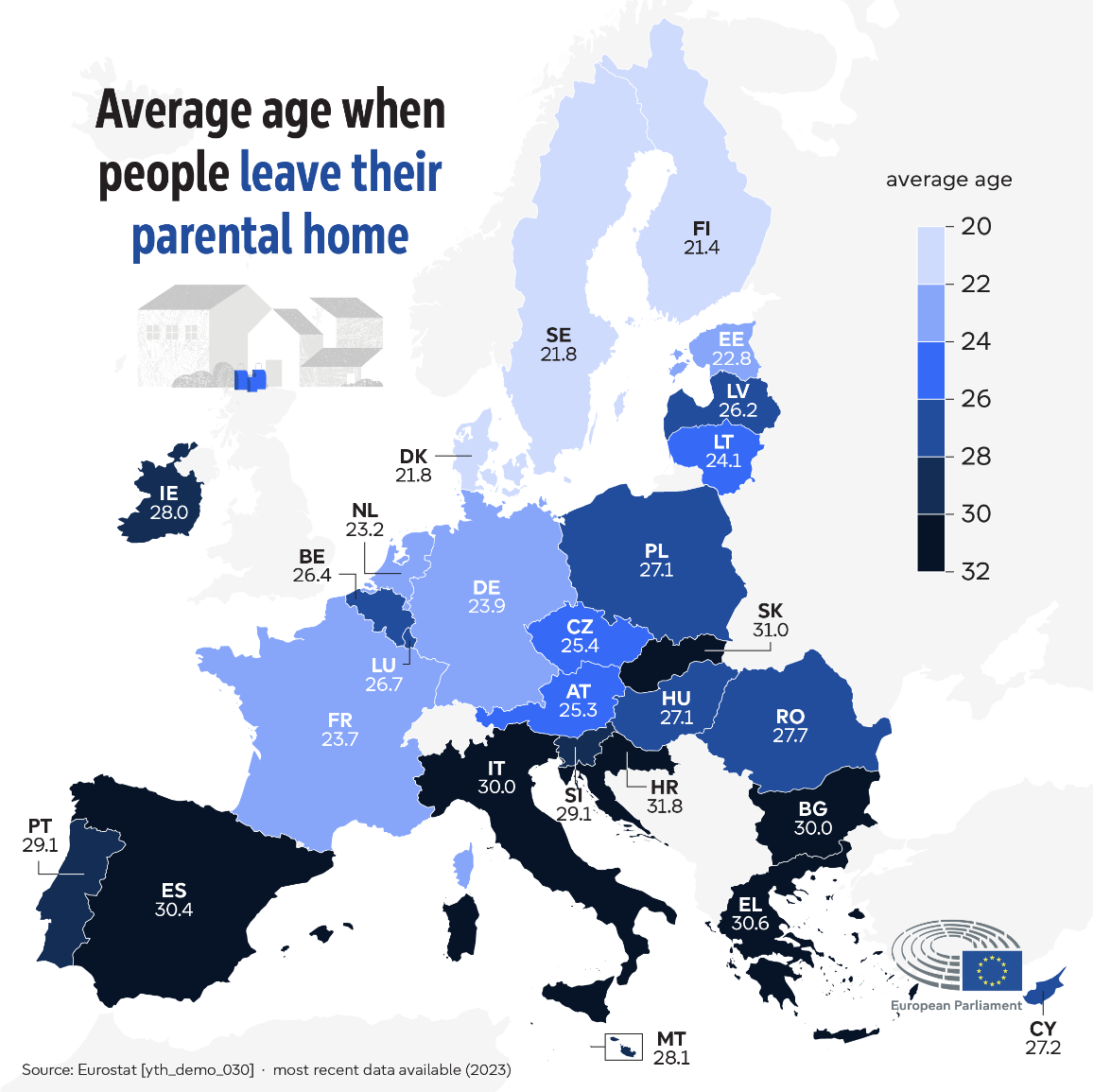The biggest problem at the European level is faced by Greece, where more than a quarter of Greeks (31%) living in cities have housing costs exceeding 40% of their income.

The Rise in Housing Prices in the EU
In less than 10 years, between 2015 and 2023, housing prices in the EU increased by an average of 48%. The largest increase was recorded in Hungary, where prices rose by 173%, while the smallest increase was in Finland, with just 5%. The main reasons for the price increase are higher construction costs and mortgage interest rates. Additionally, a reduction in construction activity limited supply, while the rise in property purchases as an investment for generating additional income also contributed.
Renting in the EU has also become more expensive. Between 2010 and 2022, rents increased by an average of 18%, partly due to the rise in short-term rentals, which took homes and apartments off the market.
The Housing Issue Shaped European Voters’ Decisions
Many Europeans are concerned about rising prices, the cost of living, and the economic situation. According to the Eurobarometer survey from July 2024, these were the main reasons that led people to vote in the European elections. Overall, more than two-thirds of people in Europe live in owner-occupied homes. Households have an average of 2.3 people and reside in homes with an average of 1.6 rooms per person.
17% of Europeans live in homes that do not offer enough space (at least one room per adult couple, individual, sibling pairs or siblings aged 12 to 17, children over 12 years old, or child couples under 12 years old).
Finally, young Europeans leave their parents' homes at an average age of 26.3 years. This varies significantly between EU countries, from 21.4 years in Finland to 31.8 years in Croatia.
















